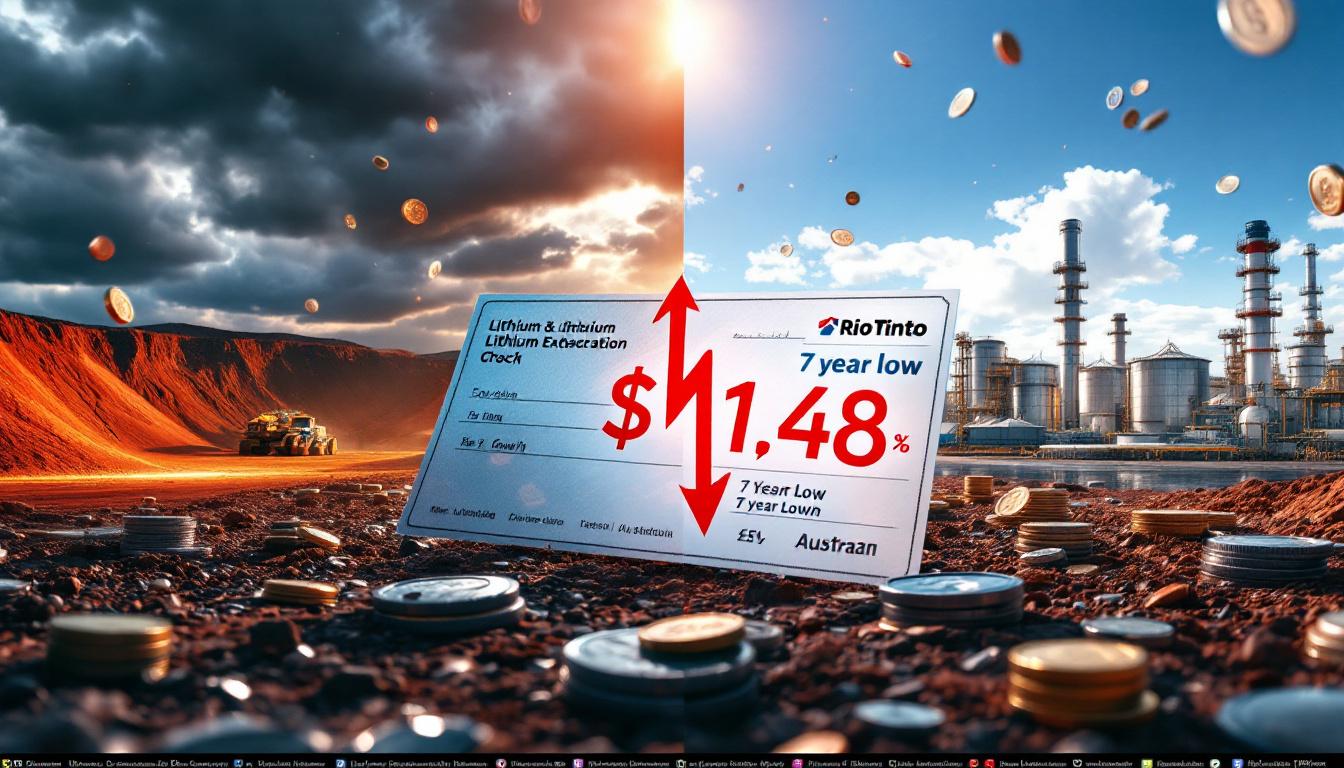What Caused SHFE Zinc's Gap Opening?
SHFE zinc opened higher with a gap on July 3, 2025, directly reflecting strong overnight performance in international markets. This price movement created significant opportunities for traders while highlighting the interconnected nature of global metal markets. The iron ore trends show similar patterns of influence from international market movements.
LME Zinc's Overnight Performance
The London Metal Exchange (LME) zinc market demonstrated remarkable strength in the previous session, opening at $2,715/mt and closing at $2,753/mt, posting a substantial gain of $39.5/mt (1.46%). During the session, prices rebounded impressively from a low of $2,700/mt to reach a high of $2,759/mt, forming a textbook bullish candlestick pattern.
Trading metrics provided additional insights into market sentiment. While trading volume decreased to 10,568 lots, open interest increased by 837 lots to reach 209,000 lots—a telling sign that new positions were being established despite lower volume. Technical analysts noted the upper Bollinger Band acted as key resistance, preventing further upside beyond the session high.
Economic Factors Driving the Rally
The primary catalyst behind zinc's upward momentum was unexpectedly weak June U.S. ADP employment data. The figures came in significantly below market expectations, triggering a chain reaction across financial markets:
- The disappointing jobs data immediately reignited expectations for Federal Reserve interest rate cuts
- This expectation shift caused the U.S. dollar index to retreat from recent highs
- Dollar weakness traditionally supports commodity prices denominated in USD
- Ongoing uncertainties around international tariff policy impact provided additional support for metals
Market Insight: Weak employment data tends to push central banks toward accommodative monetary policy, which typically weakens the dollar and boosts commodity prices as investors seek inflation hedges.
The zinc rally wasn't occurring in isolation. The employment data created a supportive environment for commodities broadly, with non-ferrous metals rising across the board as traders repositioned their portfolios in anticipation of potential policy shifts.
How Did SHFE Zinc Respond to International Signals?
The Shanghai Futures Exchange (SHFE) zinc market demonstrated clear reactivity to international price movements, with the most-traded contract opening with a notable gap higher following LME's overnight performance.
SHFE Zinc's Trading Session Details
The most-traded SHFE zinc 2508 contract opened at 22,320 yuan/mt, establishing an immediate premium over the previous close. Though the contract initially dipped to record a session low of 22,285 yuan/mt during early trading, buyers quickly emerged to support prices.
As the session progressed, SHFE zinc gradually climbed higher, eventually reaching a peak of 22,400 yuan/mt before settling at 22,375 yuan/mt. This represented a gain of 145 yuan/mt (0.65%) for the day—a significant move that aligned with the broader positive sentiment in metals.
Trading metrics painted a nuanced picture of market dynamics:
- Trading volume decreased to 57,402 lots, suggesting a potential consolidation phase
- Open interest increased by 180 lots to 130,000 lots, indicating new positions being established
- The contract maintained price action consistently above the daily average line
- Technical patterns showed the 5-day moving average providing reliable support throughout the session
Technical Analysis of SHFE Zinc's Movement
The gap opening in SHFE zinc can be directly attributed to LME zinc's positive overnight performance, demonstrating the interconnected nature of global metals markets. After the initial gap higher, the market's ability to hold above the gap level despite early session profit-taking indicates underlying strength.
From a technical perspective, several factors supported the bullish case:
- The formation of a bullish candlestick pattern signaled positive sentiment
- Price action remained above key technical indicators throughout the session
- The 5-day moving average acted as dynamic support when tested
- The higher close confirmed continuation of the upward momentum after the initial gap
This technical structure suggests traders are positioning for potential further upside, particularly if fundamental factors remain supportive and key resistance levels can be overcome in subsequent sessions.
What Fundamental Factors Are Supporting Zinc Prices?
Beyond technical indicators and short-term market movements, several fundamental factors continue to provide foundational support for zinc prices in both international and Chinese markets. These factors often align with broader metal price forecast patterns seen across the industry.
Current Supply Situation
The most significant factor underpinning zinc prices remains persistently low zinc ingot inventory levels. This supply constraint has several important implications:
- Limited physical metal availability keeps spot premiums supported
- Low inventory levels reduce the market's ability to absorb sudden demand increases
- Supply tightness offsets potential bearish factors that might otherwise pressure prices
- The constrained supply environment creates a favorable backdrop for price stability and potential upside
These inventory constraints have been a consistent theme in 2025, with smelter production issues and logistics challenges limiting the flow of material to key consumption centers. Until these fundamental supply constraints ease, prices are likely to remain supported even during periods of macroeconomic uncertainty.
Market Sentiment Indicators
Several market metrics provide insight into trader sentiment regarding zinc prices:
- The increase in open interest (+180 lots) despite lower trading volume suggests new positions being established rather than simple turnover of existing positions
- The overnight trading session showed continued buying interest even after the significant gains
- Technical indicators aligning with fundamental factors creates a potent combination for price support
- The market's ability to hold gains despite profit-taking pressure demonstrates underlying conviction
Trading Insight: When open interest increases while volume decreases during a price rise, it often indicates consolidation at higher levels with new long positions being established—a bullish sign for continuation.
The alignment of these sentiment indicators with the fundamental supply picture creates a compelling case for sustained price support, particularly if macroeconomic factors remain favorable.
How Does Zinc Compare to Other Metals in Current Market?
Zinc's performance must be viewed within the broader context of commodity markets to fully understand its relative strength and potential future direction. For instance, comparing zinc with gold prices analysis provides important insights into different metal sector behaviors.
Broader Metals Market Context
The recent zinc rally occurred within a supportive environment for commodities generally. Non-ferrous metals trended upward across the board, with several notable performances:
- Alumina, COMEX silver, and rebar led the gains among industrial commodities
- Crude oil surged significantly, providing additional momentum to the broader commodity complex
- Coking coal rose approximately 2.3% in the overnight market
- Zinc's 0.65% gain placed it firmly in the middle of the commodity performance spectrum
This collective strength across industrial commodities suggests that macro factors—rather than zinc-specific fundamentals—played a significant role in the recent price movements. However, zinc's specific supply constraints provided additional support that some other metals lacked.
Correlation with Macroeconomic Factors
Several key macroeconomic factors have demonstrated strong correlation with zinc price movements:
-
Interest Rate Expectations: The weak employment data reigniting rate cut expectations created a supportive environment for all commodities, with metals particularly sensitive to monetary policy shifts.
-
Dollar Strength/Weakness: The U.S. dollar's retreat from recent highs provided immediate support for dollar-denominated commodities, including zinc on both LME and SHFE (through exchange rate effects).
-
Employment Data: Labor market indicators have become increasingly important drivers for market direction, with weak data paradoxically supporting commodity prices through their impact on monetary policy expectations.
-
Tariff Uncertainties: Ongoing discussions about potential changes to international tariff policies create both risks and opportunities for metals markets, with zinc being particularly sensitive to industrial production expectations.
Market Perspective: Zinc's correlation with broad economic indicators has strengthened in 2025, making it increasingly important for traders to monitor macroeconomic releases alongside traditional supply-demand metrics.
What Should Traders Watch for Next?
With SHFE zinc opening higher with a gap and maintaining positive momentum, traders should focus on several key factors to inform their next decisions. The U.S. economic impact will be particularly important to monitor, as it continues to influence global commodity markets.
Key Technical Levels to Monitor
Technical analysis provides critical reference points for short-term trading decisions:
-
LME Zinc Resistance: The upper Bollinger Band around $2,759/mt represents immediate resistance that must be overcome for further upside.
-
SHFE Zinc Support: The 5-day moving average has proven reliable support, with the previous session low of 22,285 yuan/mt forming an additional support level.
-
Immediate Resistance: The previous session high of 22,400 yuan/mt represents the immediate hurdle for bulls to overcome.
-
Technical Patterns: Continuation of bullish candlestick formations would suggest further upside potential, while reversal patterns would warrant caution.
A decisive break above resistance levels could trigger additional buying interest, while failures at these levels might indicate exhaustion of the current uptrend.
Potential Market Catalysts
Several upcoming events and developments could significantly impact zinc price direction:
-
U.S. Employment Reports: Following the ADP data surprise, official U.S. employment figures will be closely watched for confirmation or contradiction of the weakness seen in private payrolls.
-
Central Bank Policy Signals: Any shift in Federal Reserve or PBOC rhetoric regarding interest rates could have immediate implications for currency strength and, consequently, metals prices.
-
Inventory Movements: Changes in physical zinc inventory levels at SHFE or LME warehouses would provide tangible evidence of supply/demand imbalances.
-
Tariff Developments: Any concrete announcements regarding international trade policies could trigger volatility across metals markets.
-
Industrial Demand Indicators: Manufacturing PMI data, automotive production figures, and construction statistics from major zinc-consuming sectors will influence medium-term price direction.
Traders should maintain awareness of these potential catalysts while establishing risk management parameters based on the technical levels outlined above.
FAQ About SHFE Zinc Market
What is causing the current strength in zinc prices?
The current strength in zinc prices stems from a combination of factors. Low inventory levels provide fundamental support, creating a tight physical market that limits downside risk. This fundamental foundation is being amplified by macroeconomic factors, particularly dollar weakness and interest rate cut expectations following disappointing employment data. The combined effect creates a supportive environment for zinc in both international and Chinese markets.
How are SHFE and LME zinc prices connected?
SHFE zinc prices typically follow LME zinc trends with some lag, as demonstrated by the recent gap opening in SHFE contracts following strong LME performance. The international benchmark influences Chinese domestic pricing through arbitrage mechanisms and sentiment spillover. However, local supply-demand factors in China can cause temporary divergences between the two markets, creating potential trading opportunities for those monitoring the spread between LME and SHFE prices.
What technical indicators are most relevant for zinc traders currently?
For zinc traders, several technical indicators have demonstrated particular relevance in the current market environment:
- The 5-day moving average has provided consistent support for SHFE zinc
- Bollinger Bands effectively identify resistance levels, particularly for LME zinc
- Daily average lines serve as important reference points for intraday trading decisions
- Bullish candlestick formations above moving averages suggest continued strength
These indicators should be monitored in conjunction with volume and open interest data to confirm the strength and sustainability of price movements.
How might changing interest rate expectations affect zinc prices?
Changing interest rate expectations typically impact zinc prices through several mechanisms:
- Lower interest rate expectations generally weaken the U.S. dollar, which tends to support commodity prices including zinc
- Accommodative monetary policy can stimulate industrial activity, potentially increasing zinc demand
- Lower borrowing costs reduce financing expenses for inventory holders, potentially supporting physical premiums
- Market risk appetite typically increases during periods of monetary easing, benefiting commodities as an asset class
The recent weaker-than-expected employment data has increased the likelihood of interest rate cuts, creating a supportive environment for zinc and other industrial metals as traders adjust their portfolios to reflect changing monetary policy expectations.
Want to Invest in the Next Major Mineral Discovery?
Discover significant ASX mineral discoveries as they happen with Discovery Alert's proprietary Discovery IQ model, which instantly transforms complex mining data into actionable insights for both short and long-term investors. Explore why historic discoveries generate substantial returns by visiting Discovery Alert's dedicated discoveries page and begin your 30-day free trial today to position yourself ahead of the market.




